The Solar Term Xiaoshu (Lesser Heat): Leading to the Climax of the Heated Summer Symphony
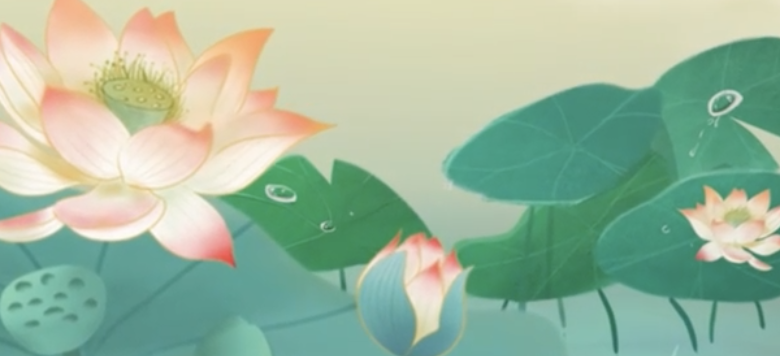

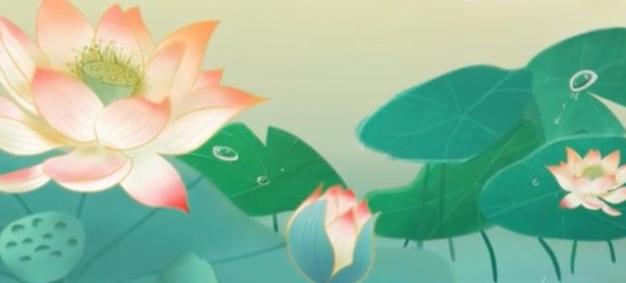
"All at once, wafts of heated wind blow;
The footprints of Xiaoshu, they follow.
Rustling bamboos forecast the rain; Gloomy mountains anticipate the thunderbolt." (Trans. by Li 2021)
In early July, comes the 11th one of the 24 solar terms, Xiaoshu (or Lesser Heat), which signifies the coming of the height of summer.
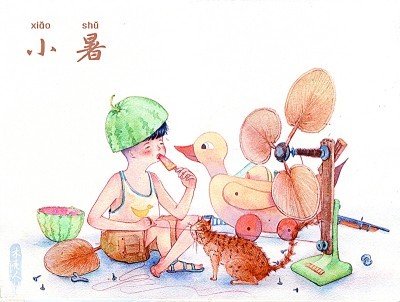
This solar term is characterized by hot and humid weather, which is reflected in the watercolour illustration created by Mukeren. In the painting, the mischievous boy who wears a "watermelon hat", and the playful fan which is "easily-assembled" by hand, are combined with the other summer elements in an imaginative way. The refreshing colours of the illustration seem to instantly beat the summer heat.
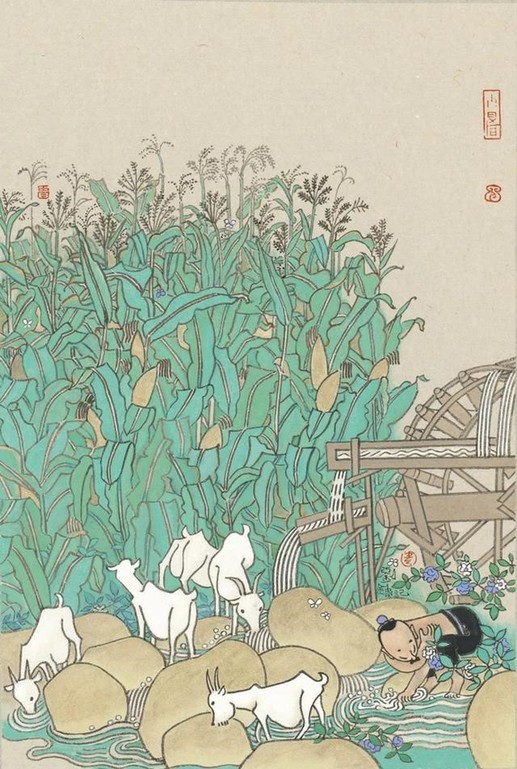
Another way to stay cool in the hot summer is to play in the water, which is depicted in the Chinese painting by Liu Jingui. The green cornfield which dominates the piece sets the mood for the painting. The lucid spring water flowing down from the waterwheel and then winding through the rocks, the man and the goats in different poses in the water, compose a scene which displays a good balance between stillness and motion. The large area of empty space adds a sense of coolness to the work.
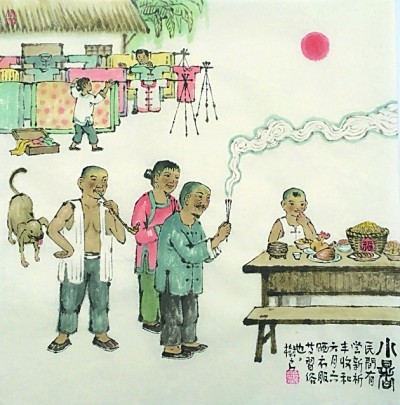
Apart from beating the heat, it is also important to make use of the heat during this solar term. Just as the saying goes, "During Xiaoshu, have the mould and damp removed". People tend to dry their books, art works and clothing outdoors during Xiaoshu. This is shown in the painting by Dai Shuliang. In the distance, is the blazing sun, in which the bedding and clothes of various colours are neatly hung, a delightful scene filled with radiant hues of the hot summer days. The foreground of the painting features another custom of this solar term, tasting new rice. In the rural areas of China, farmers cook the newly-harvested rice and serve it as offerings to their ancestors and the God of Five Grains, before having a Xiaoshu feast. In the urban areas, people tend to buy new rice, which is cooked together with the old rice. With the little child who cannot resist the temptation of the delicious dishes on the table and the adults who burn incense to pray for a good harvest, this painting represents real life scenarios full of vigour and vitality.
In addition, people also eat lotus roots, summer's special congee, and rice field eel during this solar term. Xiaoshu, or Lesser Heat, is a stimulating prelude, continuously releasing heat and passion, leading us to the forthcoming climax of the hot summer symphony.
[ Editor: JYZ]










More From Guangming Online
Medics from Fujian leave for Shanghai to aid in battle against COVID-19 resurgence
New int'l land-sea transport service to Indo-China Peninsula launched
Another makeshift hospital under construction in Shanghai
Tourists view tulips in Suiping County, Henan
In pics: blooming gagea flowers on grassland in Zhaosu, Xinjiang
Greek workers stage 24-hour general strike over high prices